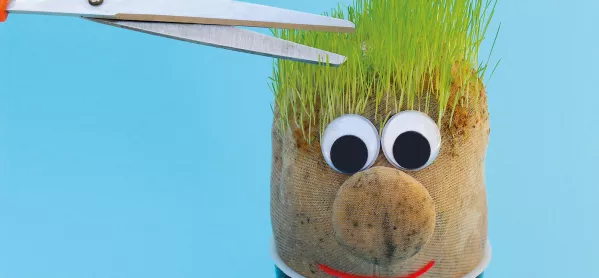- Home
- Keeping up appearances
Keeping up appearances

The primary school teacher caresses the page of the child’s exercise book with almost religious reverence. “What beautiful handwriting!” she coos. Looping cursive script scribed in royal blue pen adorns a pristine white page. Atop the paper, there is a date and underlined title. There is not a single missing capital letter or full stop. Smiling, the teacher lifts the book delicately and returns it to the drawer where it will sit until the next day’s lesson.
Fast forward 12 months and the same child sits in a secondary classroom. “Books out!” the harassed teacher cries. A crumpled exercise book appears from the student’s bag. Its corners are crumpled; a water stain marks the front. Doodles are clearly visible in the margin. There may even be a crudely drawn willy.
The child’s biro blots as they scrawl the date. They don’t write the title. Each letter sits canted on the line, printed without care.
A crude characterisation this may be, but there’s a note of truth in these differing experiences of work presentation that teachers from each side of the primary-secondary divide are likely to recognise. Why such a difference?
How something is written doesn’t always denote the quality of what is written
In primary, poor presentation is frequently held up as evidence of standards slipping, but embittered secondary teachers equally rally against a lack of understanding of the differing demands of secondary schooling. Certainly, as a secondary English teacher I know that how something is written doesn’t always denote the quality of what is written. We’ve all read a beautifully presented essay that make erroneous assertions and we can all name an A* student who writes with the spidery scrawl of a doctor.
And why should the hard graft of learning be pretty? In my mind, a draft isn’t a draft unless there have been changes, which necessitates a degree of crossing out.
Similarly, exercise books that go home in bags will inevitably look worn, and I’d argue that there’s a strong case for this continuing - whether for homework so parents can see what their little darlings are up to, or simply to get lessons off to a prompt start.
In the big picture, a dog-eared book isn’t anything a bit of Sellotape won’t fix.
‘Ethic of excellence’
However - and here’s the rub - presentation does matter, doesn’t it? To borrow a line from American educationalist Ron Berger, presentation communicates an “ethic of excellence”, ie, a commitment to produce the best work possible. Well-presented notes support the revision required for academic success and legible handwriting is essential for examination.
So, yes, there is logistical and time pressure, and, yes, a draft should be just that, but we in secondary should perhaps be doing more than we are when it comes to presentation.
Well-presented notes support the revision required for academic success
But how? As with so much in teaching it all comes down to communicating clearly to students what exactly is required. On the front cover of every exercise book in our school are five “bread and butter” presentation targets that students are scored against. This isn’t about work looking “nice”, it’s about the functional requirements of learning.
In terms of handwriting, teachers can support students by valuing automacity and not visual appeal. Head of English Sarah Barker, who tweets as @LadyBarkBark, argues that “the end-game is to achieve a style that can be produced effectively in exam conditions for an examiner to read with ease”. We need to move away from the “traditional fixation on well-formed, joined handwriting and on to the fields of speed and fluency”.
Undoubtedly, good presentation is about good habits. A student may know that names require a capital letter but if they have developed the habit of missing them out, then this can be difficult to break. One way of creating the continual reminders needed to forge new routines is a writing report card that travels with the student to every lesson.
When we’re busy, it’s easy to let presentation slip, but we need to guard against that.
Of course, there is a balance. And just as many in secondary could learn to be more mindful of presentation, some of our primary colleagues may sometimes benefit from grudgingly acknowledging that elegantly written prose might in fact be a veneer to hide vacuous content.
Caroline Spalding is director of English at Tupton Hall School, Chesterfield. She tweets @MrsSpalding
Keep reading for just £1 per month
You've reached your limit of free articles this month. Subscribe for £1 per month for three months and get:
- Unlimited access to all Tes magazine content
- Exclusive subscriber-only stories
- Award-winning email newsletters



